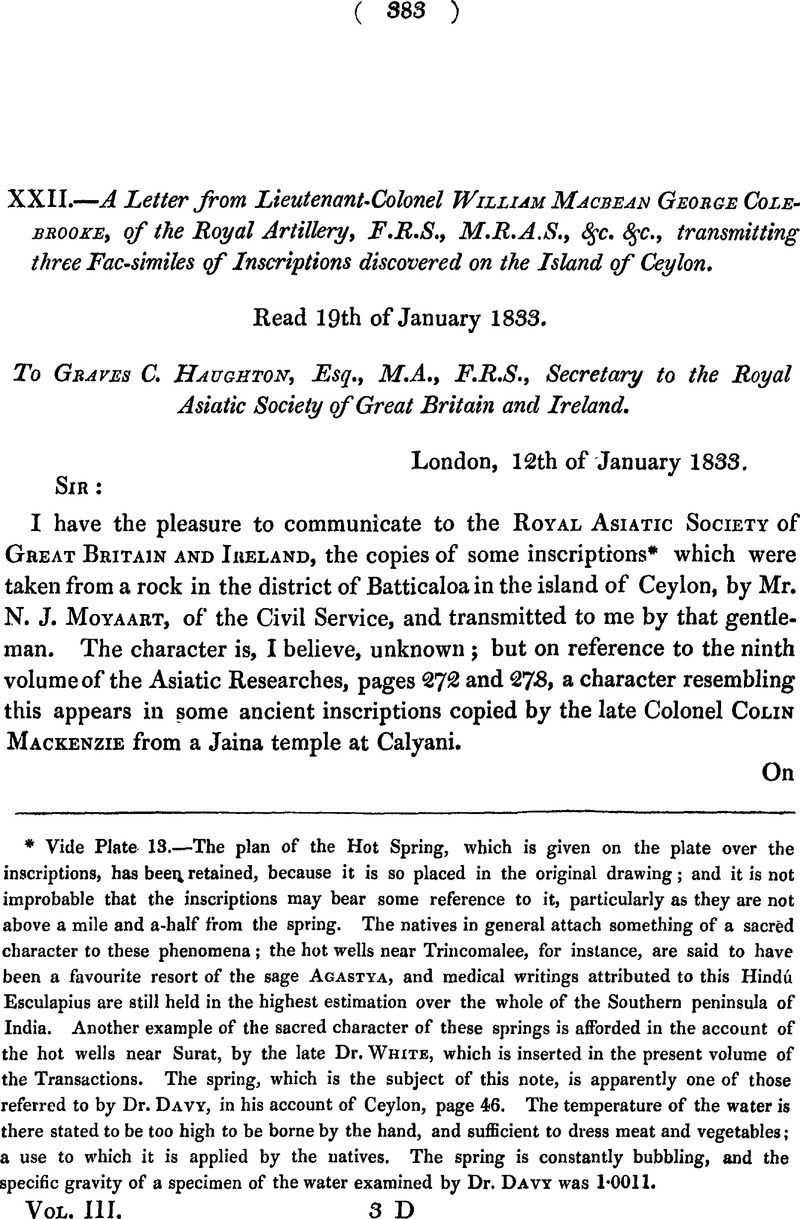No CrossRef data available.
Published online by Cambridge University Press: 24 September 2009

* Vide Plate 13.—The plan of the Hot Spring, which is given on the plate over the inscriptions, has been, retained, because it is so placed in the original drawing; and it is not improbable that the inscriptions may bear some reference to it, particularly as they are not above a mile and a-half from the spring. The natives in general attach something of a sacred character to these phenomena; the hot wells near Trincomalee, for instance, are said to have been a favourite resort of the sage Agastya, and medical writings attributed to this Hindu Esculapius are still held in the highest estimation over the whole of the Southern peninsula of India. Another example of the sacred character of these springs is afforded in the account of the hot wells near Surat, by the late Dr. White, which is inserted in the present volume of the Transactions. The spring, which is the subject of this note, is apparently one of those referred to by Dr. Davy, in his account of Ceylon, page 46. The temperature of the water is there stated to be too high to be borne by the hand, and sufficient to dress meat and vegetables; a use to which it is applied by the natives. The spring is constantly bubbling, and the specific gravity of a specimen of the water examined by Dr. Davy was 1·0011.